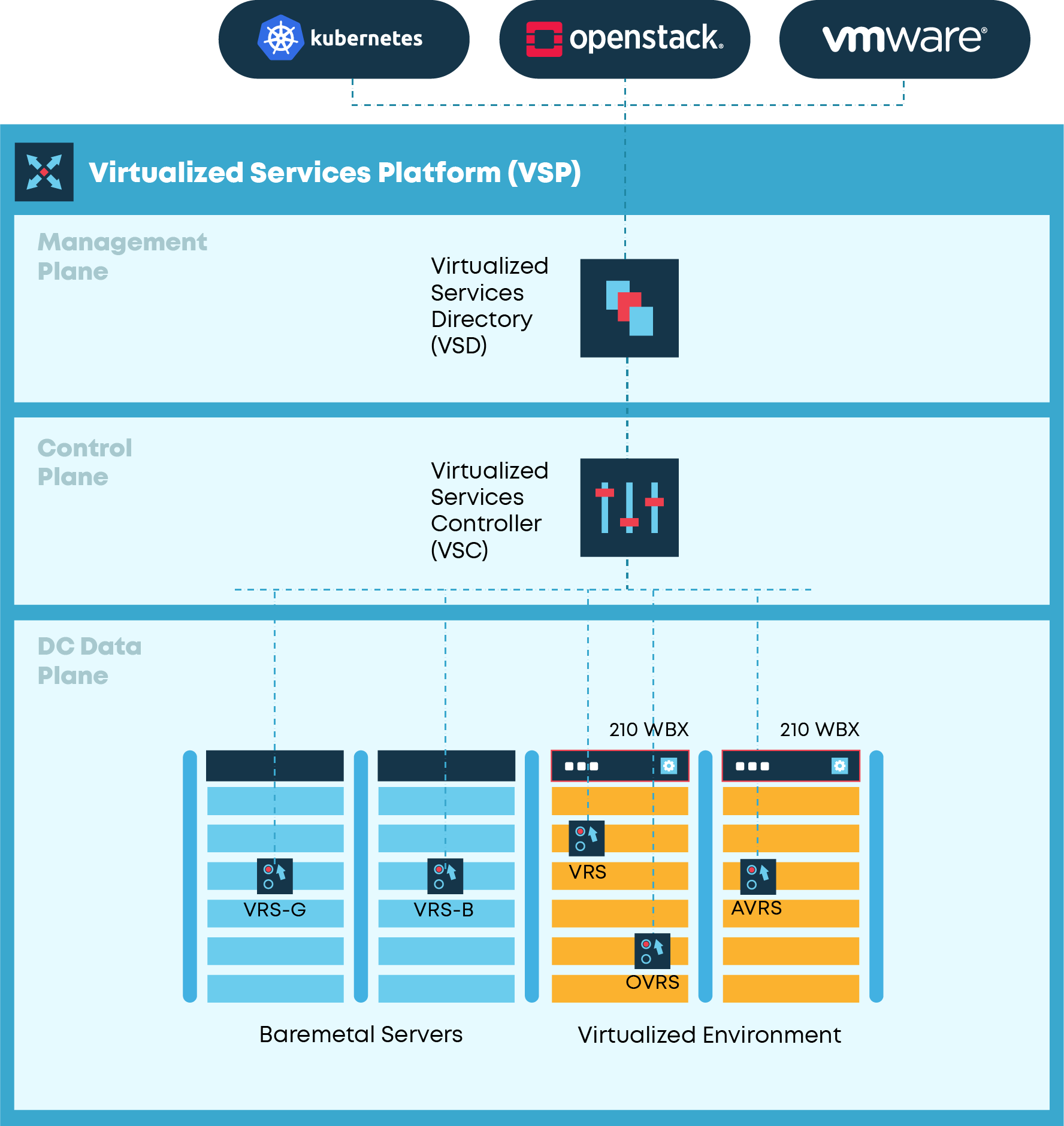提供可衡量的客户体验
下一代应用对性能和延迟有要求,如自动驾驶等应用将对电信云基础设施提出严格要求。

下一代应用对性能和延迟有要求,如自动驾驶等应用将对电信云基础设施提出严格要求。

数据增长巨大且突发,需适应性强有弹性的框架处理极端要求。

人们所期望降低 TCO ,需将下一代云解决方案的特性纳入业务案例。

行业在云自动化的推动下加速创新,下一代电信云服务有望继续创新,服务敏捷和快速上市是其基本要求。
基于FirstLink虚拟化服务平台(VSP),VSP 是领先网络自动化平台,支持多种解决方案,提供高级网络自动化,是支持 VCS 的平台。


The Virtualized Services Directory (VSD) is a programmable policy and analytics engine. It provides a flexible and hierarchical network policy framework that enables IT administrators to define and enforce network resource policies in an intuitive and user-friendly manner.
VSD contains a multi-tenanted service directory that supports role-based administration of users, compute and network resources.

Virtual Routing and Switching (VRS) is a software module that is installed in the hypervisor layer for VMs or as part of a container structure in virtualized server environments. It represents the virtual endpoint (i.e. VXLAN Tunnel Endpoint (VTEP)) used to create virtual connections to connect VMs and containers. VRS is based on the Open vSwitch (OVS) which is an open-source implementation of a distributed virtual multilayer switch which also provides the VTEP function.

VRS-B allows a bare metal server and its network function (e.g. WAN optimization, L7 firewall, load balancer, etc.) to participate in a given SD-WAN overlay VPN.

The AVRS leverages Data Plane Development Kit (DPDK) technology to help improve packet performance by bypassing the Linux kernel.

The Virtualized Services Controller (VSC) is the industry’s most powerful and scalable SDN controller. It functions as the robust network control plane for datacenters, maintaining a full view of per-tenant network and service topologies.

The OVRS leverages SmartNIC technology to offload SDN packet processing from the Linux kernel. VRS-G is the software gateway that allows the aggregation of bare metal applications through their VLAN IDs from their access ports.

VRS-G is the software gateway that allows the aggregation of bare metal functions through their VLAN IDs. VRS-G provides full VTEP capabilities thus allowing bare metal functions to be part of an SD-WAN overlay VPN concurrently with virtualized functions running on VMs and containers.

210 WBX is purpose-built to meet the demands of next generation data centers and cloud services, it is deployed as a scale-out underlay leaf or spine in the Clos-based data center architecture and is equipped with advanced IP routing and L2-L4 capabilities. It also serves as a powerful SDN VTEP to create Layer 2 and Layer 3 Virtual Private Network (VPN) services in the overlay. It also provides data plane aggregation of bare metal servers and appliances while providing a VTEP functionality between these legacy assets and other virtual endpoints in the network.
电信云 SDN(或 VCS)在各类部署场景中提供极高的灵活性与可扩展性以构建自动化网络结构,具有以下特性:
为所有主要的云管理系统、管理程序和网络设备提供支持。
提供虚拟机、容器或裸金属工作负载的无约束部署,从而实现服务器资源效率的最大化。
使用可定制业务逻辑和方案实现网络服务创建的完全自动化和简化。
提供广泛的数据分析性能监测功能。
提供对 L2 - L4 服务的支持,包括可编程安全服务。
将公有、私有和混合云应用集成到受管理的 VPN 中。
优化和扩展电信云连接,可部署在异构网络上。